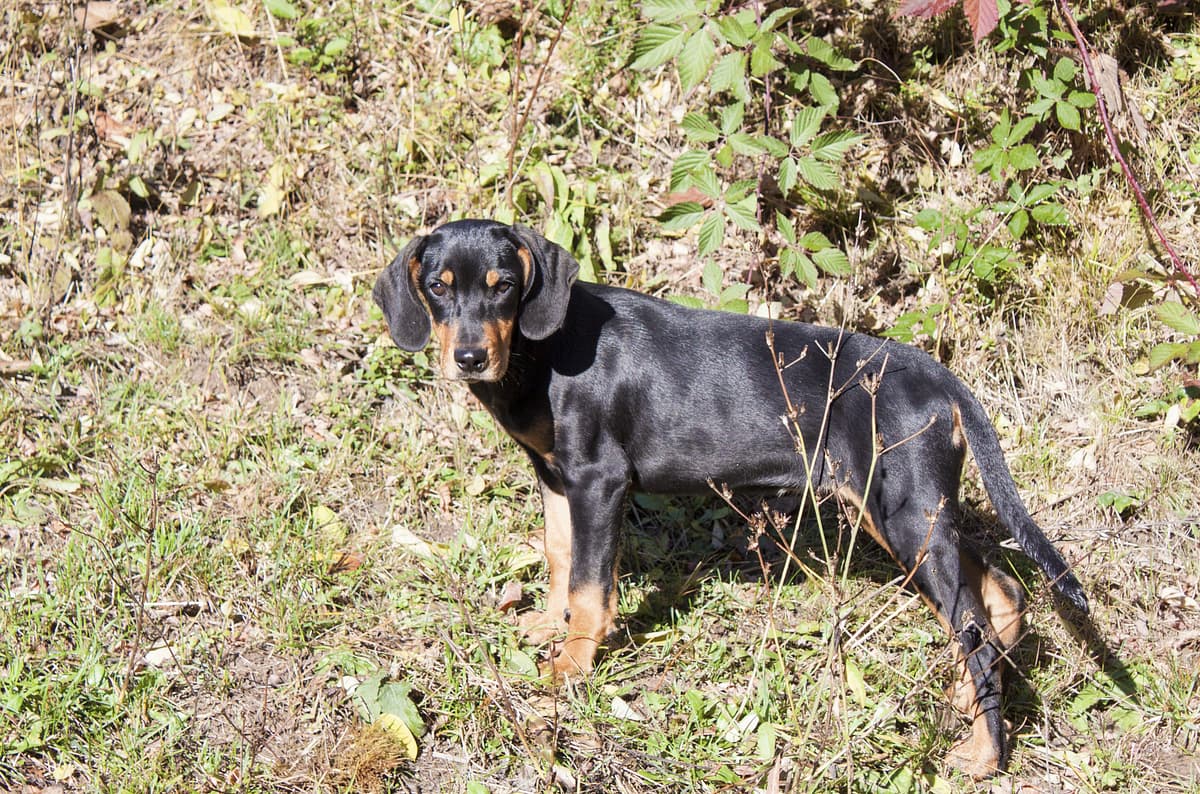Transylvanian Hound vs English Bulldog
Discover the differences between Transylvanian Hound and English Bulldog to make the best choice for your situation.
Try different breeds

Transylvanian Hound
Energetic, intelligent, and loyal, this scent hound thrives on adventure and companionship. Courageous and affectionate, it forms strong bonds and enjoys an active lifestyle.

English Bulldog
Stocky, courageous, and affectionate, this breed charms with its wrinkled face and calm nature. Loyal and gentle, it thrives as a loving family companion.
Quick comparison
Medium
30–35 kg
Short, dense
10–12 years
25–30 kg
High energy
Medium
23–25 kg
Short, smooth
8–10 years
18–23 kg
Low activity needs
Personality & behavior
Compare the personality traits and behavioral characteristics of both breeds.
Transylvanian Hound
Polite but reserved with strangers and guests
Quick learner, responds well to training
High stamina, thrives with regular exercise
Enjoys interactive play, not overly exuberant
Adjusts moderately to new environments and routines
English Bulldog
Affectionate and gentle with family and children
Learns basic commands with some patience
Prefers lounging over vigorous physical activity
Enjoys play but tires fairly quickly
Adjusts well to most living environments
Care needs
Exercise, grooming, and daily care requirements
Transylvanian Hound
Hip dysplasia, ear infections
English Bulldog
Brachycephalic syndrome, skin fold infections
Suitability
How well each breed fits different living situations and families
Transylvanian Hound
Challenging for novices
Needs experienced handling and consistent training
Not ideal
Needs space and can vocalize frequently
Excellent companion
Thrives with active owners and frequent outdoor activity
Generally good
Patient but should be supervised with small children
Possible with care
Can coexist with pets if socialized early
Prone to anxiety
Dislikes being left alone for extended periods
English Bulldog
Good option
Easygoing, low-maintenance nature suits owners with limited dog experience
Excellent fit
Moderate exercise needs and calm demeanor work well in small living spaces
Not ideal
Low stamina and breathing issues make them unsuited for high-activity lifestyles
Very suitable
Gentle, patient, and tolerant with young children when properly socialized
Usually compatible
Generally sociable but may need guidance with other pets, especially dogs
Not recommended
They struggle with long periods alone and are prone to separation anxiety
Breed strengths
What each breed excels at and their best qualities
Transylvanian Hound
- Loyal to family and familiar people
- Strong scent-tracking abilities
- High endurance for long activities
- Generally healthy and hardy breed
- Intelligent and quick to learn commands
English Bulldog
- Affectionate with family members
- Generally good with children
- Low exercise requirements
- Minimal grooming needs
- Adaptable to apartment living
Challenges & considerations
Potential challenges and considerations for each breed
Transylvanian Hound
- Prone to stubborn or independent streaks
- Requires extensive daily physical activity
- Can be reserved with strangers
- Strong prey drive towards small animals
- May vocalize frequently when bored
English Bulldog
- Prone to respiratory problems
- High risk of overheating
- Susceptible to skin infections
- Can be stubborn during training
- Tends to drool frequently
Ready to choose your perfect breed?
Learn more about each breed or compare other breeds to find the perfect match for your lifestyle.
Discover more helpful tools
Make use of our other free tools to get the most out of your pet experience
